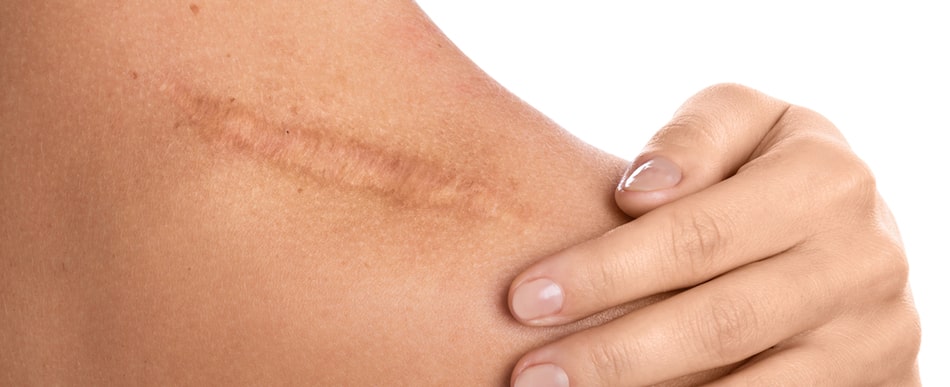
Once a wound begins to heal, tissue will start to grow over it in order to protect the wound and replace the skin that has been damaged. In many cases, this can also lead to the development of a scar. While some people are not bothered by the formation of a scar, there are others who want to reduce or eliminate the appearance of a scar, so they are not reminded of the wound. Scar revision surgery is able to reduce the look of a scar as well as restore some of the function or range of motion to the targeted area on the body that might have been lost due to the formation of the scar. An experienced surgeon will also keep the tone and color of the skin in mind to make sure the final results match the surrounding area of skin.
Some of the possible risks of surgical scar revision include:
The first step in planning for scar revision surgery is scheduling a consultation appointment with a board-certified plastic surgeon or dermatologist who is experienced in revising the appearance of multiple types of scars on the body.
The surgeon will examine the scar to accurately assess its size, depth, and severity. Some of the characteristics of the scar that will be examined include its thickness, color, and contour.
The doctor will also discuss both surgical and nonsurgical options and share the benefits and risks of each choice. Finally, realistic expectations will be set so the patient will have an accurate idea of what to expect for the final results.
The scar revision surgery recovery process depends on the extent of the surgery performed by the doctor. In general, the doctor will advise patients to avoid putting any type of stress or strain on the wound for a few days (or weeks) in order to make the healing process easier on the treated area.
There will be some swelling and bruising around the treated area for a week or two after the surgery. It is important to monitor the impacted area to make sure it is healing properly. Patients should be sure and contact their surgeon if the swelling does not resolve on its own.
Protecting the skin after surgery is a crucial step in the healing process. The act of protecting the skin includes wearing protecting clothing or sunscreen when it is necessary to go outside for an extended period of time.
It is also important to be patient when it comes to the healing process of surgical or nonsurgical scar revision. Depending on the type of procedure performed by the doctor, it can take several weeks or months to see the final results. There could be some regularly scheduled follow-up appointments with the doctor, and this is the perfect time to address any issues or concerns with the scar revision healing process.
Cosmetic Town is the premier online cosmetic surgery news and information resource. We connect patients with the best doctors for cosmetic procedures. Get the answers to all of your questions and find a doctor near you.
- MA